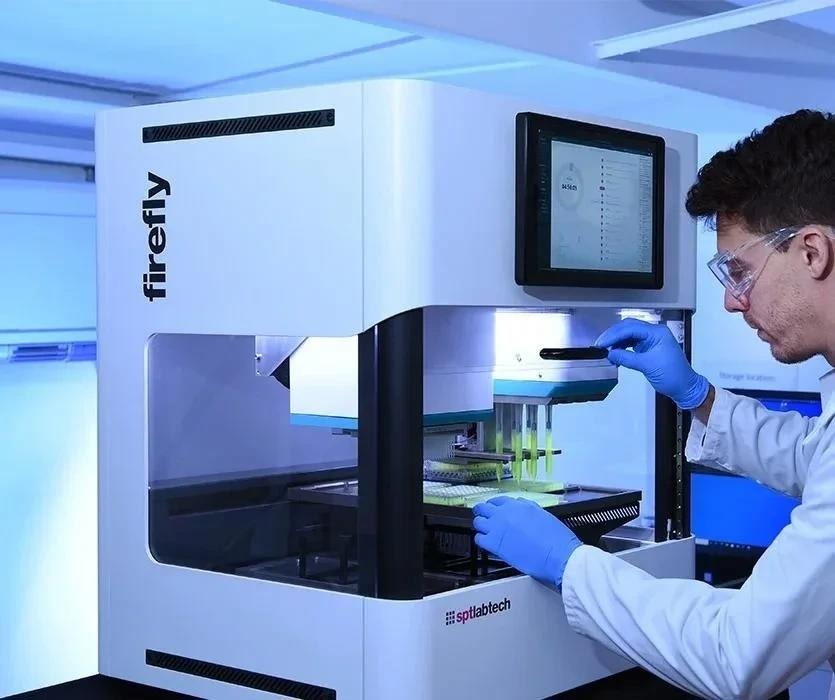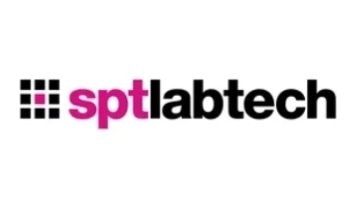When it comes to automated liquid handling, what are the critical factors for success in high-throughput CLIA-certified laboratories offering Laboratory-Developed Tests (LDTs), especially in the context of next-generation sequencing (NGS) library preparation?
Success in high-throughput laboratories offering LDTs hinges on a few key factors. Firstly, reliability is paramount. Laboratories need to be able to rely on their instruments for consistent and accurate results. The second important factor is ease of use. This encompasses both day-to-day operation (that is, efficient setup and minimal error risk), as well as the ability to develop and implement new tests with ease. This is especially important for NGS applications as they become more complex and prevalent. The approach that we have taken with firefly development emphasizes our desire for customers to stand on their own two feet and be able to develop and optimize new methods with less reliance on vendor support.
Furthermore, the ability to miniaturize tests is a game changer in this cost-sensitive market. By using technology that supports reliable and accurate miniaturization, laboratories can reduce reagent volumes and costs, thereby making tests more profitable for clinical diagnostics.
How are SPT Labtech's automated liquid handling solutions designed to support clinical laboratory needs?
Our automated liquid handling solutions are built on robust, innovative technology developed by our leading scientists and engineers. Central to our approach is a commitment to collaboration, both within our organization and with our customers. We actively engage with the scientific community, tuning in to laboratories' real-world challenges. This is why scientists and researchers worldwide trust us to develop exceptional, personalized solutions. By drawing on expertise from within our team, we innovate to meet a recognized need and take that idea to market.
Specifically focusing on firefly, we have implemented customer-driven innovations that enhance its functionality and user experience. Among these is the ability for users to easily create and develop their methods through an intuitive user interface for smooth daily operation. Our software platform prioritizes usability in method development and user operation, offering different access levels for defined users, from simple method execution to advanced automation control.
 Image Credit: SPT Labtech
Image Credit: SPT Labtech
What role did automated liquid handlers, like dragonfly® discovery, play during the pandemic response for LDT laboratories?
Automated liquid handlers played a significant role during the pandemic. The global shortage of pipette tips and the demand for large-scale testing drove awareness of the benefits of reagent dispensers in conjunction with traditional liquid handling instruments.
dragonfly discovery's non-contact reagent dispensing capability helped to conserve key resources and expedite protocols, as it was used to dispense master mixes and extraction reagents daily. It was instrumental in miniaturizing processes at scale, especially to support whole genome sequencing in variant detection.
Can you elaborate on how firefly's liquid handling capabilities are applied in NGS library preparation for LDTs and its adaptability to different workflows?
The key difference with firefly compared to traditional automated liquid handlers is the sheer amount of functionality within a single benchtop instrument. It combines the robust and reliable reagent dispensing of dragonfly discovery with a multi-functional pipette head, allowing for efficient and rapid reagent distribution, minimal use of deck space, and reduced pipette tip usage. This unique dual capability makes firefly particularly adept at NGS library preparation, which incorporates dispensing steps such as bulk reagent, master mix, or ethanol addition, as well as liquid transfer steps for bead cleanups and index additions.
Additionally, firefly features a gripping module that facilitates automated plate movement within the system. No manual intervention is needed to transfer plates between deck positions, or on and off heaters, shakers, and magnets.
We will launch a new firefly+ module early next year, featuring an on-deck thermocycler and extra deck capacity that offers a true walkaway solution for NGS library preparation. For laboratories to operate at maximum efficiency, users will have access to firefly’s full liquid handling capabilities while the thermocycler is in operation. This flexibility allows laboratories to use firefly in the most valuable way to solve their specific applications and throughput requirements.
How does firefly’s compact design address space constraints faced by clinical laboratories, and how does it support NGS-based LDTs?
Addressing space constraints has always been a primary consideration in firefly's design, as laboratory space is at a premium for clinical and research laboratories. We are seeing that laboratories are often needing to expand their capabilities with new equipment, and real estate is expensive, particularly in the hubs where a lot of clinical laboratories are located.
firefly's compact footprint, achieved by utilizing vertical space, allows it to fit more functionalities in a smaller area than traditional large deck liquid handlers. This compactness is further enhanced as the system is operated entirely from an integrated touchscreen, meaning that there is no need for additional on-bench computer equipment.
firefly Overview
Could you share any insights into recent firefly software updates that support the needs of LDT laboratories?
From the outset, we have focused firefly software development around enhancing user experience, to facilitate secure and intuitive operation. We wanted to make firefly capabilities accessible to all users, and not just those with in-house programming experts.
The user access control feature offers varying access levels, from basic method running to complete automation interface control. Protocol version control and a full audit log of timestamped user logins and protocol runs ensure traceability, which is critical for the regulated environment of laboratories offering LDTs. A barcode tracking capability for reagent and sample plates is being developed, supporting unambiguous identification and handling.
Another key aspect of firefly is cloud-based protocol sharing, ensuring standardization of protocols across multiple laboratories and users, making it easy for laboratories to reproduce and scale confidently.
How is firefly ready for use in regulated environments?
We brought Denise Grovewood into our team as Diagnostics Project Manager to ensure that we have the necessary systems in place to support the needs of customers offering or developing LDTs. Denise has direct experience working in diagnostics, as before joining SPT Labtech, she supported building and running the equipment department for mass COVID-19 testing in the UK. Denise has been integral since joining, supporting in training our application scientists so they can assist customers effectively.
firefly software has been developed to meet compliance in diagnostics settings, with features we have already covered, including defined user access control, comprehensive audit logs, and the ability to recover runs.
Considering the current landscape, why is using firefly for LDT so important?
firefly's importance in the current landscape is driven primarily by its application in clinical genomics, including oncology, rare diseases, and reproductive health. We are already seeing the impact of NGS in cancer diagnostics and companion treatments, and this technology will continue to be imperative in improving patient outcomes through optimal therapy selection, disease monitoring, and even early-stage disease detection. As NGS applications grow, so does the need for scalable, profitable automation, which firefly addresses. It has been developed to adapt to these contexts' increasing sample numbers and throughput requirements.
How do you see the role of firefly evolving and supporting the increasing complexity of genomic sequencing and precision medicine in LDTs?
firefly is conceptualized as a dynamic platform product, engineered to evolve with the demands of genomic sequencing and personalized medicine with continued advancements in both its hardware and software. We anticipate a rising trend in the need for higher throughput and an increased emphasis on unattended, walk-away operational capabilities, underpinned by a focus on profitability for the laboratories performing these services. In precision medicine, the speed at which you can process and interpret results is critical to improving patient outcomes. Introducing an on-deck thermocycler in firefly+ is the first evolution of the current architecture and illustrates our commitment to meeting the demand for increased throughput and walk away.
Another key aspect of firefly is the strategic focus on miniaturization. By transitioning from 96 to 384-well plate processing, firefly enables laboratories to quadruple their sample processing capacity within the same spatial footprint. This amplifies throughput and reduces consumables and reagents' consumption, striking a balance between driving productivity and cost efficiency.
About Joby Jenkins
With over 20 years of experience, originally as part of the TTP group and then with SPT Labtech, Joby has established SPT Labtech as an internationally recognized provider of cutting-edge instruments and technologies for life science research. 
Joby and his teams (product management, applications, and marketing) define the company's product strategy by working closely with highly strategic and commercial partners to deliver products that solve real-world challenges in the laboratory.
About SPT Labtech
SPT Labtech designs and manufactures robust, reliable, and easy-to-use solutions for life science. We enable life scientists through collaboration, deep application knowledge, and leading engineering to accelerate research and make a difference together. We offer a portfolio of products within sample management, liquid handling, and multiplexed detection that minimize assay volumes, reduce material handling costs, and put the discovery tools back in the hands of the scientist.
At the heart of what we do
Many of our innovations have been born out of the desire to create solutions to existing customer problems; and it is this ethos that drives SPT Labtech’s R&D efforts. Our strengths come from the trust our customers have with us to develop truly unique, automated technologies to meet their needs. We combine cutting-edge science with first-rate engineering to put customers at the heart of everything we do.
A problem-solving state of mind
The substantial breadth of expertise within our company enables us to be involved in the full life cycle of our products from the initial design concept, mechanical and software engineering, and prototyping, to final manufacture and sale. These qualities allow us to offer the best possible technical and mechanical support to all the equipment that we supply, hence maintaining excellent client relationships.